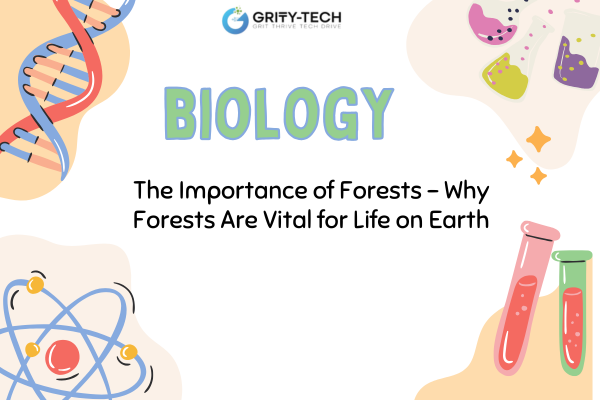Introduction
Imagine you’re standing in your classroom and suddenly the floor starts shaking, books fall off shelves, and windows rattle! Or picture a mountain suddenly bursting with smoke, lava, and ash flying into the sky. Sounds like a scene from a movie, right? But these dramatic events are real and are known as earthquakes and volcanoes.
Both of these natural events are caused by the movement of the Earth’s crust, and even though they can be dangerous, they help scientists understand how our planet works from the inside!
expert-led Geography classes – visit our website to learn more
Who studies Earthquakes and Volcanoes?
- Seismologists study earthquakes. They use tools like seismographs to measure the shaking of the ground.
- Volcanologists study volcanoes. They observe volcanoes to understand how and when they might erupt.
These scientists are like Earth detectives, helping us prepare for and understand natural disasters.
Why do Earthquakes and Volcanoes happen?
The Earth’s outer shell (called the lithosphere) is broken into large puzzle pieces called tectonic plates. These plates are always moving—slowly, but constantly.
- When plates grind, collide, or slip past each other, the energy that builds up is suddenly released as an earthquake.
- When magma (hot, melted rock) from deep inside the Earth pushes its way to the surface, it erupts as a volcano.
These movements are part of Earth’s way of changing and reshaping itself.
When do they happen?
Earthquakes and volcanoes don’t follow a schedule—they can happen anytime. Some places feel hundreds of small earthquakes every day, but people don’t notice them because they’re too weak.
Volcanoes can erupt frequently or remain dormant (inactive) for hundreds of years. Scientists keep an eye on active volcanoes to watch for signs of future eruptions.
Where do they happen?
They mostly occur along plate boundaries, especially around the Pacific Ocean, a region known as the Ring of Fire. This area has lots of active volcanoes and frequent earthquakes.
Examples:
- Earthquakes: Nepal (2015), Japan, California
- Volcanoes: Mount Vesuvius (Italy), Mount Fuji (Japan), Mount St. Helens (USA)
How do Earthquakes and Volcanoes work?
Earthquakes:
- Tectonic plates move.
- Pressure builds up at faults (cracks in the Earth).
- When the pressure is too much, the rocks snap.
- This releases energy in the form of seismic waves, causing the ground to shake.
Focus = The underground point where it starts
Epicenter = The point on the surface directly above the focus
Volcanoes:
- Magma collects in chambers under the Earth’s crust.
- Gas and pressure build up.
- When the crust cracks or pressure is too high, lava, ash, and gases explode out.
There are three main types of volcanoes:
- Shield volcano – wide, gentle slopes (e.g., in Hawaii)
- Cone volcano – tall and pointed (e.g., Mount Mayon)
- Composite volcano – a mix of layers (e.g., Mount Fuji)
Core Concepts Table
| Concept | Meaning | Example |
| Tectonic Plates | Giant pieces of Earth’s crust that float and move | Pacific Plate |
| Seismic Waves | Waves of energy that cause the shaking during an earthquake | Detected by a seismograph |
| Focus & Epicenter | Focus = where earthquake starts; Epicenter = surface point above it | Shown on quake maps |
| Magma vs. Lava | Magma is underground; lava is magma that reaches the surface | Lava flows down volcanic slopes |
| Ring of Fire | Earthquake and volcano hotspot around the Pacific Ocean | Japan, Indonesia, Chile |
FAQ
Q1: Can animals sense earthquakes?
Yes! Some animals act strangely before a quake, like barking dogs or restless birds.
Q2: Can we predict volcanoes?
Sort of! Scientists can sometimes detect signs like gas release, heat, or rumbling before eruptions.
Q3: Are there underwater volcanoes?
Yes! They can even form new islands when they erupt under the ocean.
Q4: What’s the strongest earthquake ever?
The 1960 Chile earthquake was the most powerful ever recorded—9.5 on the Richter scale!
Fun Facts
- Earthquakes can also happen on the Moon and Mars!
- Lava moves slower than you think—you can often walk away from it.
- Volcanic ash can travel thousands of kilometers through the sky!
- In ancient times, people believed volcanoes were homes of gods or monsters.
- The word “volcano” comes from Vulcan, the Roman god of fire.
Conclusion
Earthquakes and volcanoes show us that the Earth is a living, breathing planet. Even though they can cause damage, they also create new land, fertile soil, and teach us how the Earth works deep inside.
By studying them, we can stay safer, build stronger, and respect the incredible power of nature. Whether it’s the trembling of the ground or the fiery eruption of a mountain, Earth’s power is always at work—shaping the world one shake or blast at a time.








